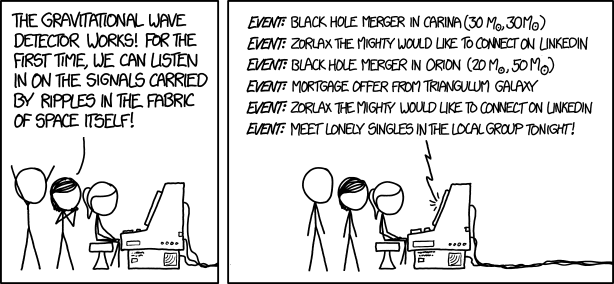Interesting paper. It answers some of the questions asked in my previous post (but not allAmber G. wrote:^^^ Thank you. I am glad that this was helpful.
I am posting the PRL article, for those who might be interested but do not have access. An article in PRL generally has a 5 page limit but in this case they let if go and allowed more than 5 pages.
https://dl.dropboxusercontent.com/u/181 ... 281%29.pdf
1 It says that other detectors for gravitational waves were made from '60s upto mid-2000s. There is no indication of how successful they were (obviously they were not, because this paper is the first report of such a detection) but no mention is made of why they were un-successful. Any comment would be appreciated.
2. So gravity waves pass through all matter in space (evidenced by the fact that it reached earth), the question is one of signal attenuation. Given that it moved objects on earth, one could expect it did the same in other masses it passed through. One would expect that this will reduce the strength of the gravity wave signal. How did the authors account for this in their calculations seeing that there is no way they can know the quantity and nature of matter it passed through from the site of explosion to earth.
3. Another way to confirm the data (or atleast locate the source of the waves) would be to measure the difference in time of wave arrival at Hanford vs. Livingston. I dont know if this data was reported or somehow used, in the paper.
4. Also, the wave is three-dimensional (I would think), whereas the detectors are 2-dimensional. How would they account for this.
The amount of environmental noise and the approaches needed to isolate the system from their influence is fascinating. Much of this seems to be as much of engineering than physics


